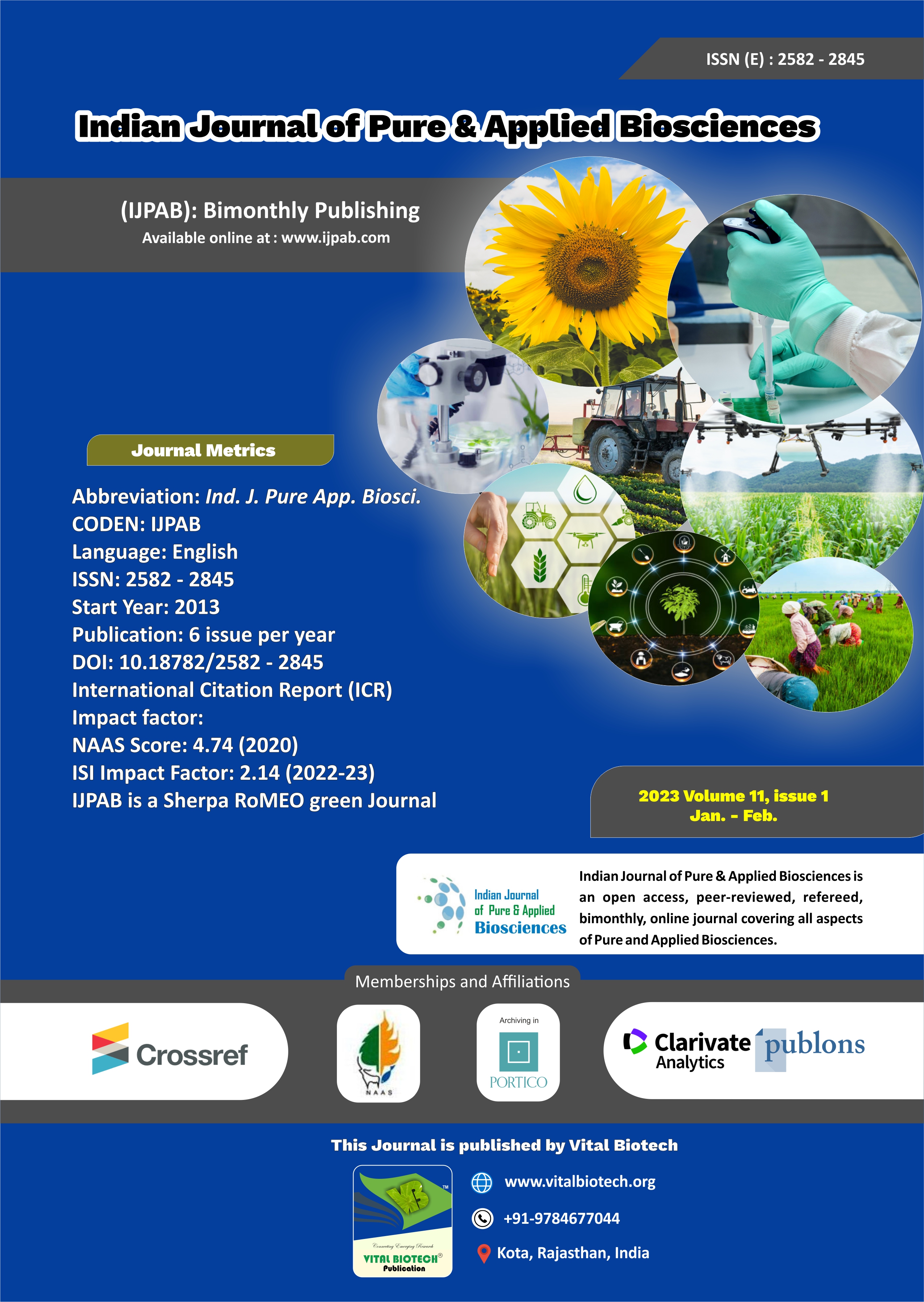-
No. 772, Basant Vihar, Kota
Rajasthan-324009 India
-
Call Us On
+91 9784677044
-
Mail Us @
editor@ijpab.com
Indian Journal of Pure & Applied Biosciences (IJPAB)
Year : 2023, Volume : 11, Issue : 1
First page : (14) Last page : (22)
Article doi: : http://dx.doi.org/10.18782/2582-2845.8970
Causes of Meat Deterioration and Preservation Methods
Aman Ullah¹*, Riaz Ahmed Gul², Nimra Inaam³, Muhammad Naeem⁴, Muhammad Imran⁵, Salman Aslam⁶, Amir Saeed⁷, Faizan Saleem¹, Abdur Rahim⁸, Ahmad Raza¹
1Faculty of Veterinary Sciences, Bahauddin Zikriya University, Multan, Pakistan,
2Department of Clinical Medicine & Surgery, Faculty of Veterinary and Animal Sciences,
The İslamia University of Bahawalpur, Punjab, Pakistan
3University of Agriculture Faisalabad, Pakistan,
4Department of Pharmacology and Toxicology,
University of Veterinary and Animal Sciences, Lahore, Pakistan,
5Institute of Microbiology, university of agriculture Faisalabad, Pakistan
6Epidemiology and Public Health, University of Agriculture Faisalabad, Pakistan
7Poultry Production from University of Veterinary and Animal Sciences Lahore, Pakistan
8Clinical medicine and Surgery, University of Agriculture, Faisalabad, Pakistan
*Corresponding Author E-mail: amanullahzain682@gmail.com
Received: 15.10.2022 | Revised: 17.01.2023 | Accepted: 28.01.2023
ABSTRACT
Humans have been practising the skill of meat preservation since the beginning of time, and this practice lives on in all of the foods we consume today. Primarily, meat preservation postpones the development of microorganisms like bacteria and fungi, so meat and its byproducts may sit on store shelves for longer without losing quality or flavour. Dysbiosis is the process by which any food, when exposed to organisms (bacterial and fungal), that degrade the products, changes from being edible to being inedible via denaturation of texture, color, and odor. Spoilage and a lack of storage skills during processing and analyzing generate a significant annual loss of meat and its byproducts for the economies of all countries. In general, organic material, lipid oxidation, and metabolic activity are the fundamental processes of meat deterioration. Traditional techniques for preserving food include drying, salting, pickling, and smoking, all of which aid in preservation when frozen. However, as time went on, new techniques for preserving food emerged, such as freezing, chilling, and irradiation, which significantly extended the period of preservation and made it easier to apply. Modern procedures, such as chilling and other freezing technologies, are used to preserve all manner of meat and meat products, extending their shelf life and improving their quality and texture by all but neutralizing the development of microorganisms.
Keywords: Meat, storage, deterioration, lifespan, Flavour, Microorganism and fungi.
Full Text : PDF; Journal doi : http://dx.doi.org/10.18782
Cite this article: Ullah, A., Gul, R. A., Inaam, N., Naeem, M., Imran, M., Aslam, S., Saeed, A., Saleem, F., Rahim, A., & Raza, A. (2023). Causes of Meat deterioration and Preservation Methods, Ind. J. Pure App. Biosci.11(1), 14-22. doi: http://dx.doi.org/10.18782/2582-2845.8970


